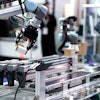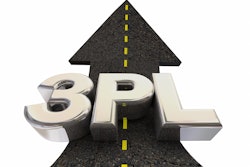
A recent conversation with a procurement leader showed that the organization suppliers had been delivering like clockwork in just a few days- a great turn around. It was textbook stuff.
When the supply chain crisis happened, clockwork quickly turned into chaos.
Within a few months the procurement team described massive delivery delays and no alternative suppliers. Delays went from 3 days to 3-5 weeks. Procurement didn’t have the insights to alert other areas of the company so that they could make the necessary adjustments. You can imagine the snowball effect across the business. The impacts to production planning affected delivery to customers, and ultimately, the ability of customers to complete projects on time.
This all happened because they lacked the data to make informed decisions throughout the source-to-pay process.
Procurement’s growing data dilemma
Unfortunately, stories like this are very common across all industries. Procurement organizations today must manage and make decisions in an uncertain world. They need predictive insights, which are fueled by data—internal, external, structured and unstructured. Yet for most procurement teams, acting on data swiftly and smartly is their kryptonite because data is not readily accessible. But extracting value from data should be their superpower.
A recent survey by Accenture highlights just how serious procurement’s data dilemma has become. It is not that executives do not understand the power of data. 58% believe it is the answer to being more innovative and efficient. However, they are not investing in improving how they use it, only 5% are investing half or more of their budget in internal and external data improvements. Most procurement executives are investing less than 30% of their budget in analytics.
A lot of complexity, a little connection
Procurement organizations’ technology solution footprint is also a significant barrier to getting more value out of data. To capture and manage data, procurement organizations rely on a combination of Enterprise Resource Planning (ERP) systems and a constellation of top satellite solutions. There has been an explosion of these point solutions for procurement sub-processes—everything from supplier on-boarding and contract management to supply relationship management.
This problem is multi-faceted. Procurement organizations can have a complex technical infrastructure. This could be because a company grows through acquisitions, or because functions are siloed across the business and operate like their own solutions. In fact, 58% of the companies surveyed have some or significant silos across their operations. On top of this, procurement organizations have a sea of solutions that don’t talk to each other. It is no surprise that executives say that integrating point solutions is their biggest technology challenge. And in this environment, procurement professionals must review all the different systems and pull information manually to analyze and propose solutions.
Procurement has the data it needs, but it’s trapped in isolated solutions. Plus, there are not any big picture insights to act on. While some organizations have built data lakes to try to address the issue, they aren’t extracting insights fast enough or at scale. This is a missed opportunity for procurement functions to deliver new value to the business and it couldn’t happen at a worse time. Not only is the environment volatile, but all eyes are also on procurement to be a strategic partner to the business.
Transition to data-driven operations
Procurement organizations don’t have to operate this way. They can own their superpower with an operating model combining data, AI, cloud and the right talent for a much more strategic function.
Digital tools and AI extract data insights so that procurement has a real-time, single source of truth. This fuels better and more proactive decision-making, which delivers a cascade of benefits across the business.
For example, imagine that at the requisition submission, it's identified that the combination of supplier, item and requestor has resulted in invoice and payment delays in the past. With this insight, automatic actions can be triggered to ensure good receipts are done on-time, so the invoice clears directly into payment. That’s one less issue to resolve.
How to accelerate and future-proof operations
No procurement organization can achieve this overnight. It’s a journey.
Instead of building from the ground up across technology, process and people, procurement organizations can tap into leading-edge capability that’s always improving.
Technology change is happening fast— as 76% of companies are working to implement widespread automation. In the next decade, we expect top companies to be those that undergo what we call total enterprise reinvention, which transforms every part of the business with technology, data and artificial intelligence to drive multi-dimensional value.




















